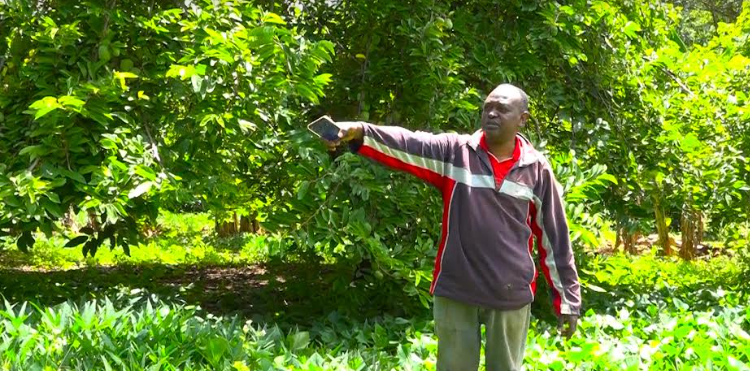Fredrick Kinyanjui quit his career as a long-distance truck driver after more than two decades to concentrate on farming at his expansive farm in Kamahuha Murang’a County.
Inspired by his now late father, who he tells KNA raised him and his siblings using the proceeds he got from farming in the 1970s, Kinyanjui folded his sleeves, hoe in hand, and ventured into custard apple farming.
Custard apples (Annona reticulata), also known as matomoko, are scaly, cone-shaped sugary fruits that look like apples.
“My father inspired me to venture into fruit farming, so by the time I quit my job in 1995, I had a few custard apple trees on my farm, besides other fruit trees like mangoes, bananas, and avocados,” he says.
A section of his five-acre piece of land has 40 fully mature custard apple trees, which he says can be planted from seedlings or seeds which take a very long time to mature.
They can also be propagated vegetatively through cuttings, layering, grafting, or budding, a process he carries out in his nursery as he also supplies the seedlings to other farmers.
Kinyanjui grows the high-yielding Annona and Soursop varieties of custard apples and prunes them once per year. Custard apples do well in well-aerated, well-drained, loamy soils with rich organic matter and a soil PH of 5.0 to 8.0 for optimum growth.
“Once the seedlings are ready for transplanting, prepare your pits and plant them in pits of 60 by 60 by 60cm at a spacing of four-by-four meters to six by six, depending on the soil that must be mixed with well-composed organic farmyard manure,” he observes.
Custard apples mature in three years but are ready to give commercial yields in the fifth year of growth, with each tree producing between 700-800 kilos per season, which he sells at Sh50 to Sh60 per kilo.
The trees are easy to maintain as they are not susceptible to many pests and diseases apart from the fruit flies and the false codling moth (FCM), which he curbs using pheromone traps.
Custard apples require minimal water once they are planted, apart from occasional watering during the flowering season to prevent flower abortion, which takes place in October, with fruits appearing from May to September.
“Farm yard manure should also be used in plenty for higher yields,” says Kinyanjui.
The father of four notes that there is a gap in the market and advises more farmers to join him by venturing into custard apple farming. He advises farmers who want to reap more in agriculture to farm on a large scale, as the return on investment is guaranteed to be higher as opposed to farming on a small scale.
Custard apples have numerous health and nutritional benefits as they contain the antioxidant vitamin C, which helps fight diseases, while the potassium and magnesium in them are believed to protect the heart against cardiac diseases, control blood pressure, keep the skin and hair healthy, and suppress cancer cells.
By Florence Kinyua




